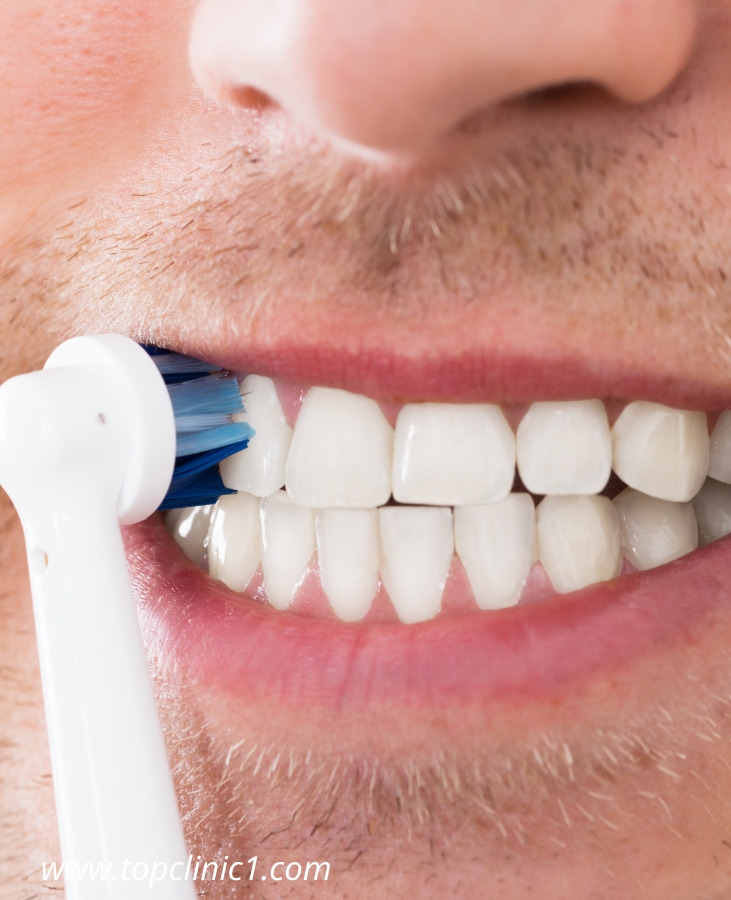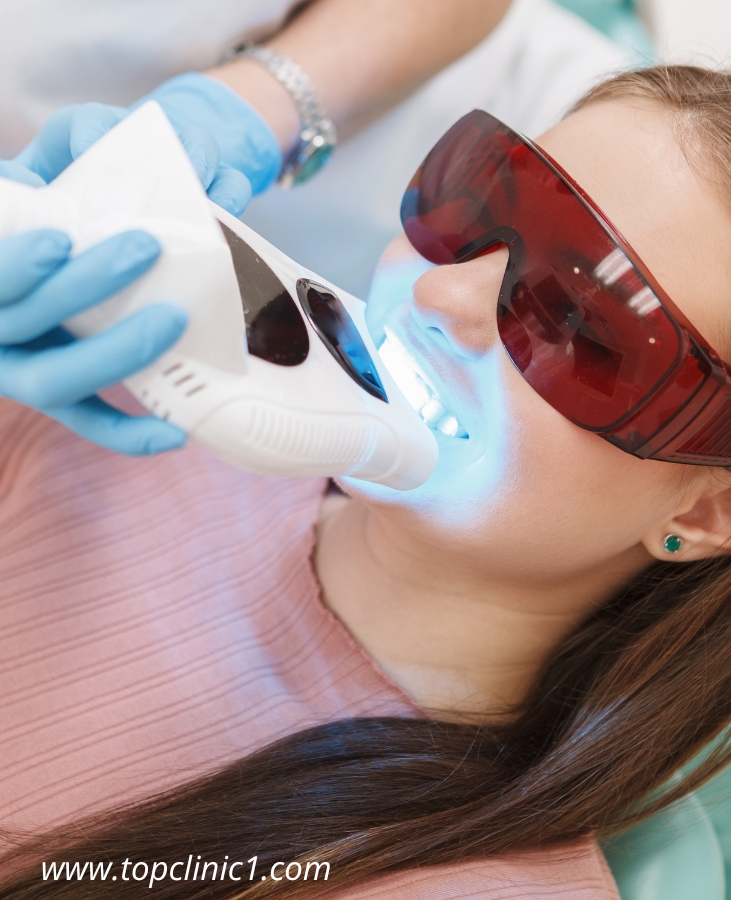عيادات التوب لطب وزراعــة الأسنــان

Cleaning lime and removing calcifications
What is dental tartar and how can dental tartar be removed?
No matter what we eat, some food particles remain in the teeth, and these particles lurk in the crevices of the teeth, and lead to the growth of bacteria. The bacteria then form a thin film on the teeth, which is known as plaque.
When plaque remains on the teeth unchecked, it continues to grow and harden, and when plaque hardens, it leads to tartar.
One of the harmful effects of dental calculus is that it provides a large area for plaque growth, and forms a plaque to which plaque adheres. This may occur on teeth, between fissures, near the gums, and in the back of the mouth that the brush is difficult to reach. Unlike plaque, tartar is easy to see, because it often turns teeth a darker yellow-brown color as it hardens. Due to its porous nature, dental tartar absorbs stains caused by acidic food and drink. So, if you usually drink tea or coffee, and you have tartar buildup, your teeth will likely become discolored easily.
The growth of tartar may lead to other, more serious dental problems. The accumulation also makes brushing teeth more difficult, which may cause tooth decay, so dental tartar must be cleaned properly.
Causes of dental calculus
Food and drink remain in our mouths for a long time after eating them, feeding germs in the mouth. They grow on sugar and starch, and these germs destroy teeth and harm the gums.
Once tartar forms, it becomes a hideous cycle of bacterial growth. Tartar grows more easily, and plaque increases when it comes into contact with saliva. Plaque infects the gums and teeth if it is not removed by daily flossing and brushing, and also harms the gum tissue that supports the bones. When plaque turns into tartar, the tartar must be removed by a dentist.
Four ways to prevent the appearance of dental tartar
Once plaque grows on your teeth, the only way to remove it is with professional treatment. You will need to visit a dentist who will use special tools to remove tartar from all areas of the mouth. This is known as dental scaling.
It is easier to avoid tartar than to treat it. Follow these tips to avoid lime buildup:
1. Use a brush and floss
Brush your teeth twice daily for about two minutes each time. And brush even in hard-to-reach places, because these places in particular contain a lot of germs. Flossing helps remove any food particles stuck between the teeth, so this is an important step in your dental care routine.
2. Choose fluoride toothpaste
Fluoride helps repair enamel, and some toothpastes contain ingredients that fight bacteria, so choose wisely.
3. Rinse daily with mouthwash
Use antiseptic mouthwash daily. Rinsing for 30 seconds with the right mouthwash works wonders in keeping your mouth clean and fighting the bacteria that causes plaque. Mouthwash reaches places in your mouth that a brush can’t reach to fight germs throughout the mouth.
4. Eating and cleaning food
Sugary and starchy foods help germs grow, so make sure you brush your teeth immediately after eating to ensure you don’t leave behind any particles that bacteria could feed on.

Many people dream of a bright, bright smile
But before discussing teeth whitening methods, you should maintain them by:
Use toothpaste and brush twice a day. It is recommended to use toothpaste containing fluoride, which can fight tooth decay.
Use dental floss to get rid of dirt between the teeth.
Avoid foods that may cause tooth discolouration; Such as tea, coffee, colored drinks, and smoking.
Avoid acidic foods that may damage tooth enamel. Dentists advise waiting about half an hour after eating before brushing your teeth, because brushing acid on your teeth may harm them
Teeth whitening methods?
There are many methods used in dental clinics for whitening, and the choice of method depends on the person’s choice and the strength of his gums and teeth.
Facing addresses many problems, the most important of which it addresses are:
Teeth discolouration
Spaces between teeth
Eroded teeth
Broken or cracked teeth.
WhatsApp us